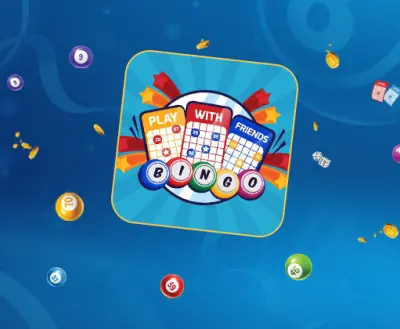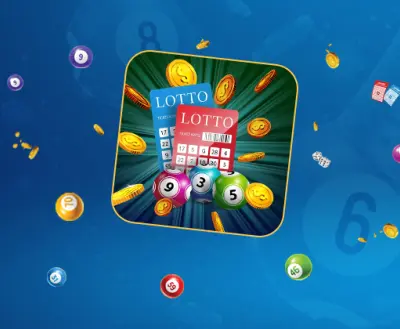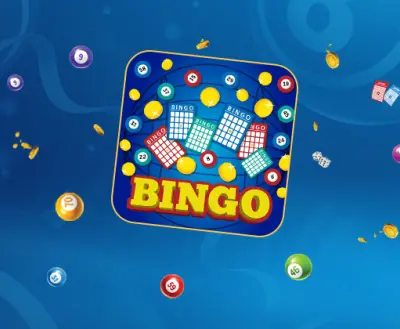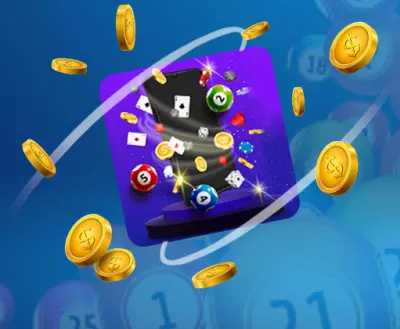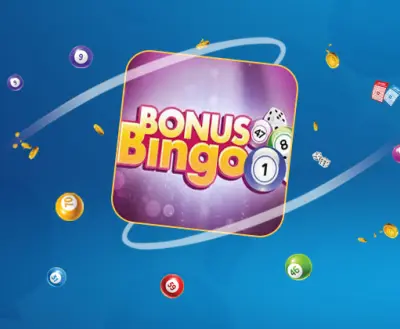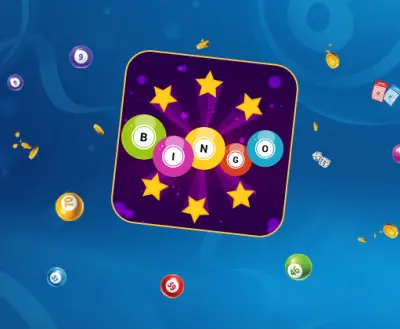How to Play Bingo - A Comprehensive Guide
How to Play Bingo - A Comprehensive Guide
Welcome to our comprehensive guide on how to play bingo! We at Gala Bingo, with our vast experience in the online casino industry, have created this guide to share our love for this timeless game and help you understand the ins and outs of bingo.
Bingo is more than just a game; it's an experience filled with excitement, anticipation, and the thrill of calling out "Bingo!". Whether you're a seasoned player or a beginner looking to dive into the world of bingo, we've got you covered.
In this guide, we'll walk you through the fundamentals of bingo, variations, game patterns, strategies, and tips to help you get the most out of your bingo experience. We'll explain everything from the basic rules to how to play online and even how to adapt the game for children. So, are you ready to embark on this bingo journey with us? Let's get started!
The Fundamentals of Bingo
Understanding the Bingo Card Layout and Format
Understanding the bingo card layout is crucial to your gameplay. A standard bingo card is a grid comprising 25 squares, arranged in five vertical columns and five horizontal rows. Each square contains a number except for the middle square, which is typically marked as a 'free space'. The columns are labelled from left to right with the letters 'B', 'I', 'N', 'G', 'O', with each column containing a specific range of numbers.
While this is the standard format, remember that bingo card layouts can vary, especially when considering different variations of the game. For example, 90-ball bingo uses tickets with three rows and nine columns, while 80-ball bingo has a 4x4 grid format. But don't worry - the objective remains the same: to mark off numbers and achieve a winning pattern.
The Objective of a Bingo Game
The main objective of playing bingo, whether you're playing at a local bingo hall or online, is to be the first to complete a predetermined pattern on your bingo card. This could be a horizontal, vertical, or diagonal line, or even more complex patterns in certain game variations. Sounds simple, right? But remember, with each game comes a new card and a new chance to strategize and win.
How to Play Bingo Step-by-Step
Step-by-Step Instructions on How to Play
Playing bingo is straightforward and simple to learn. To start, each player purchases one or more bingo cards. When the game begins, the bingo caller selects numbers at random. As numbers are called, players mark off matching numbers on their cards.
In a traditional bingo hall, the caller will draw balls with numbers and letters from a spinning wheel or a random number generator. For online bingo, this process is automated, and numbers appear on your screen. Remember, speed and attention to detail are key here - the faster you spot and mark off your numbers, the better.
Explanation of the Rules Governing Bingo Gameplay
The rules of bingo are simple and straightforward. Listen or watch as the numbers are drawn. If one of your numbers is called, mark it off on your bingo card. The aim is to be the first player to complete the predetermined pattern for that game with marked numbers.
As soon as you complete the pattern, you'll need to alert the caller or the online game that you've won. In traditional bingo, you'd shout "Bingo!", while in an online game, this might be done automatically for you. But remember, the game isn't over until the caller verifies your numbers.
Understanding the Role of the Bingo Caller
The bingo caller plays a vital role in the game. It's their responsibility to ensure a fair and enjoyable game. They randomly select and announce the numbers, and once a player shouts "Bingo!", they must validate the winning card. In an online setting, this process is automated, but the caller's role remains fundamentally the same.
Explanation of Common Bingo Lingo used during Gameplay
Every game has its own language, and bingo is no exception. Understanding common bingo lingo can not only enhance your enjoyment of the game but can also ensure you're keeping up with the pace of play.
Terms such as "Caller" - the person calling out the numbers, "Coverall" - a game in which you must cover all the numbers on your card to win, or "Dauber" - the pen used to mark off called numbers on a bingo card, are all part of the game. And who can forget the most important phrase of all – “Bingo!” – a joyous declaration that you’ve won the game!
Bingo Game Patterns
Explanation of Different Bingo Game Patterns
Bingo is a game of patterns. In a traditional game, the most straightforward pattern is a straight line - this could be horizontal, vertical, or diagonal. But the world of bingo is more diverse than you might think.
There are numerous other patterns that players may be required to form, depending on the specific game rules. Some common ones include the 'Four Corners' pattern where players aim to mark the four corners of their bingo card, the 'X' pattern, the 'Blackout' or 'Coverall' where you aim to mark all numbers on the card, and many more.
The chosen pattern is usually announced before the start of the game. So, be prepared to adjust your game strategy based on the required pattern. Each pattern presents its own challenge, and this variety is one of the aspects that makes bingo so appealing.
How Understanding Bingo Patterns Affects Gameplay
Understanding bingo patterns isn't just about knowing what they look like; it can significantly affect your gameplay and strategy. The pattern dictates what you need to achieve on your card to win the game. The moment the game pattern is revealed, you should be visualising it on your card, planning your moves accordingly.
A clear understanding of patterns can enhance your speed in spotting numbers and increase your chances of being the first to call "Bingo!". Remember, each game might have a different pattern, which keeps the gameplay exciting and challenging.
Strategies to Quickly Recognise Winning Patterns
To quickly recognise winning patterns, it helps to stay focused and attentive throughout the game. One strategy is to mentally overlay the pattern on your card as soon as it's revealed, which can help you quickly identify the numbers you need to mark off.
Visualising your progress towards the pattern can also be beneficial. Some players find it helpful to mark off irrelevant numbers lightly so that the pattern they're aiming for stands out more clearly. With practice, recognizing patterns becomes easier, and your speed will naturally improve.
How to Play Bingo Online
Step-by-Step Instructions on How to Play Bingo Online
Playing bingo online follows the same basic principles as the traditional game, with a few slight differences due to the digital platform. To start, you'll need to register at an online bingo platform like ours at Gala Bingo. Once you've logged in, you'll select a bingo room to join and buy your bingo cards.
When the game starts, numbers will be drawn and displayed on your screen. If any of these numbers are on your cards, they will typically be marked off automatically. However, some platforms give you the option to mark numbers manually for a more authentic bingo experience. If you complete the required pattern on your card, you win!
Navigating Online Bingo Software
Navigating online bingo software can seem daunting at first, but don't worry, most platforms are designed to be user-friendly. When you enter a game, your bingo cards will be displayed on the screen, along with information about the current game, such as the pattern you're aiming for and the numbers already called.
Buttons for purchasing more cards, changing the card display, or accessing game settings are usually clearly marked. If you're unsure about anything, most platforms have a 'Help' section or customer service options. It may take a few games to feel comfortable, but soon navigating the software will become second nature.
Tips for Winning at Online Bingo
While luck plays a significant role in bingo, there are tips you can use to boost your winning chances. One strategy is to play with multiple cards - the more cards you play, the higher your chances of having a winning card. However, make sure you can keep up with all the cards you're playing.
It's also beneficial to play at off-peak times. With fewer players in the game, you're competing against fewer cards. Lastly, familiarise yourself with the online platform you're using. Understanding the features of the software can enhance your gameplay and improve your overall experience.
Bingo Variations
Introduction to the Different Variations of Bingo Games
Did you know there are several variations of bingo that add a fun twist to the classic game? Some of the most popular versions include 75-ball, 80-ball, and 90-ball bingo, each offering unique gameplay and different bingo card layouts.
In 75-ball bingo, the most common type in North America, players aim to complete a pattern on a 5x5 grid. 80-ball bingo, often played online, uses a 4x4 grid and has a variety of winning patterns. 90-ball bingo, a favourite in the UK, has three rounds in each game, offering more chances to win.
How to Play Each Bingo Variation
Despite the variation in bingo games, the basics remain the same. Players purchase bingo cards and mark off numbers as they're called, aiming to complete a pattern before anyone else.
In 75-ball bingo, you'll play with a 5x5 grid, with a 'free space' in the centre. A pattern is revealed at the beginning of the game, and the first player to complete this pattern wins.
80-ball bingo uses a 4x4 grid. Each column is a different colour, and there are several possible patterns to win.
90-ball bingo is played on a ticket with three rows and nine columns, and there are three chances to win: one line, two lines, and a full house (all numbers marked).
Adjusting Gameplay Strategy Based on Bingo Variations
Each variation of bingo requires a slightly different strategy. In 75-ball bingo, the pattern you're aiming for can greatly influence your strategy, as some patterns are more challenging than others.
For 80-ball bingo, speed is typically of the essence. With more possible patterns, it's crucial to keep up with the numbers called and mark your card swiftly.
90-ball bingo offers three ways to win, so even if you're out of the running for one round, you could still win the next. In this variation, it's important to keep track of your progress towards each of the three goals.
Bingo Stragegies and Tips
Bingo Tips for Beginners: How to Start Playing Bingo
If you're new to the world of bingo, don't worry, we've got some beginner-friendly tips to help you start your journey. First and foremost, familiarise yourself with the basics of the game. Understanding the rules, patterns, and how to play is essential. Start with the traditional game before venturing into variations, this will build a strong foundation for your bingo knowledge.
Try to play with as many cards as you can manage without losing track. This increases your chances of winning. But remember, bingo is supposed to be fun! So, play the number of cards you're comfortable with, even if it's just one. Over time, as you get more accustomed to the game, you'll find you can handle more cards simultaneously.
Strategies to Improve Chances of Winning at Bingo
While bingo is a game of chance, there are strategies to boost your odds. One popular approach is the Granville strategy. Developed by a financial analyst, it's based on the idea that in the long run, there will be an equal number of high and low, and even and odd numbers called. So, when you choose cards, aim for a balance of these.
Another strategy is the Tippett theory, which suggests that the more numbers are called in a 75-ball bingo game, the more those numbers will tend towards the median number 38. So, if you expect a long game, choose cards with numbers close to 38. For short games, go for cards with numbers closer to 1 and 75.
How to Leverage Bingo Patterns in your Gameplay Strategy
Being able to quickly identify patterns is key to bingo. Different game versions have different patterns, so familiarise yourself with these before you start playing. For example, 75-ball bingo is all about patterns - you could be aiming for a horizontal line one game, and a specific shape the next.
Your ability to adapt to the changing patterns will greatly improve your chances of winning. The faster you can identify a pattern, the quicker you'll know when you've hit bingo. So, make pattern recognition a focus of your practice sessions, and watch your gameplay improve.
Bingo for Children
How to Simplify and Adapt Bingo for Younger Players
Bingo isn't just a game for adults. It's also a fun and educational activity for children. To adapt the game for younger players, simplify the rules and use fewer numbers. For instance, you might choose to only use numbers from 1-20, or use a smaller card format like a 3x3 grid.
Another fun twist for children is to replace numbers with objects, animals, or words that kids are learning. This turns the game into a learning tool. Always remember to clearly explain the rules and the pattern they're aiming for, to make sure everyone is on the same page.
Teaching Children How to Play Bingo
When teaching children to play bingo, it's important to make the game engaging and enjoyable. Start by explaining the basic rules and demonstrating how to play. You might want to play a few rounds together, walking them through each step.
Help them understand how to recognize numbers or words on their card quickly. This can be a great way to build their concentration and quick-thinking skills. Remember, the goal is not just to win but to have fun and learn. So, keep the atmosphere light and enjoyable, providing encouragement and celebrating their progress along the way.
Conclusion
Throughout this guide, we've walked you through the entire process of playing bingo. We've covered everything from the fundamental rules and objectives, to different bingo patterns and variations, strategies to improve your winning chances, and even how to adapt the game for children. We've given you a step-by-step guide to playing both traditional and online bingo, ensuring you're well equipped no matter your preference.
Bingo isn't just a game, it's an exciting journey filled with anticipation, joy, and camaraderie. Whether you're playing at a local bingo hall, participating in a grand bingo event, or simply enjoying a game online from the comfort of your home, the thrill of waiting for your numbers to be called never fades.
We encourage you to delve deeper into the world of bingo. Use this guide as a springboard to hone your skills, explore different strategies, and experience the various game variations. Remember, bingo is a game of luck and chance, so the outcome can't be predicted. But with practice and a solid understanding of the game, you can enhance your gameplay, improve your chances, and most importantly, enjoy the game more. So why wait? Grab your bingo cards, listen out for the bingo caller, and immerse yourself in the captivating world of bingo!
Frequently Asked Questions
How do you play Bingo?
Bingo is a game of chance where players mark off numbers on cards as they are randomly called out, aiming to be the first to mark off all their numbers or a particular pattern. The specifics can vary depending on the game variation.
What are the rules of Bingo?
The main rule in Bingo is to mark off the numbers on your card as they are called out. If you manage to mark off all your numbers (or a specific pattern depending on the game variant), you shout out "Bingo!" to signal your win. However, rules may vary slightly depending on the specific variation and setting of the game.
How many numbers are there in a Bingo game?
The quantity of numbers in a Bingo game varies based on the variant. For example, in a traditional 75-ball Bingo game, the numbers range from 1 to 75. However, in 90-ball Bingo, which is popular in the UK, numbers go from 1 to 90.
What is a Bingo card?
A Bingo card is a card with a grid of numbers. In 75-ball Bingo, this grid is usually 5x5, with the centre square typically marked as a 'free' or 'wild' space. Each column is labelled with the letters B, I, N, G, O from left to right. In 90-ball Bingo, each ticket has three rows and nine columns, but only five squares per row contain numbers.
How do you mark numbers on a Bingo card?
As numbers are called out, players mark corresponding numbers on their cards. In a physical setting, this is typically done with a dauber or marker. Online, this process is often automated, but you can choose to mark them manually for a more authentic experience.
Can multiple people win in a single Bingo game?
Absolutely. It's possible for multiple players to have cards that fulfil the winning conditions at the same time, leading to multiple winners in a single game. In such cases, the prize is typically split evenly among the winners.
Are there different variations of Bingo?
Yes, there are several variations of Bingo. The most common include 75-ball Bingo, typically played in North America, and 90-ball Bingo, popular in the UK. There's also 80-ball and 30-ball Bingo, each providing a different experience with unique rules and card formats.
What is the objective of Bingo?
The main objective in Bingo is to be the first player to mark off a specific pattern of numbers on your card. This pattern could be a full row, a column, a diagonal line, or even every number on the card, depending on the game rules.
How do you win at Bingo?
You win at Bingo by being the first to complete the required pattern and shout "Bingo!". It's crucial to stay attentive, listen carefully to the caller, and mark your numbers accurately and quickly.
Can children play Bingo?
Yes, Bingo is a great game for children. It's often used as an educational tool to teach number recognition, patterns, and listening skills. However, any form of Bingo involving real money is considered gambling and is restricted to individuals of legal gambling age.
Is Bingo considered a form of gambling?
When played for money, Bingo is indeed considered a form of gambling. It's crucial to be aware of local laws regarding online gambling if you're considering playing Bingo for real money. However, Bingo can also be played for fun without any money involved, making it a popular choice for family games and social events.


